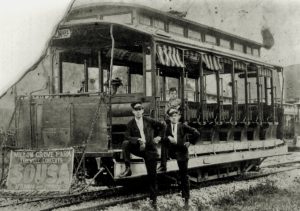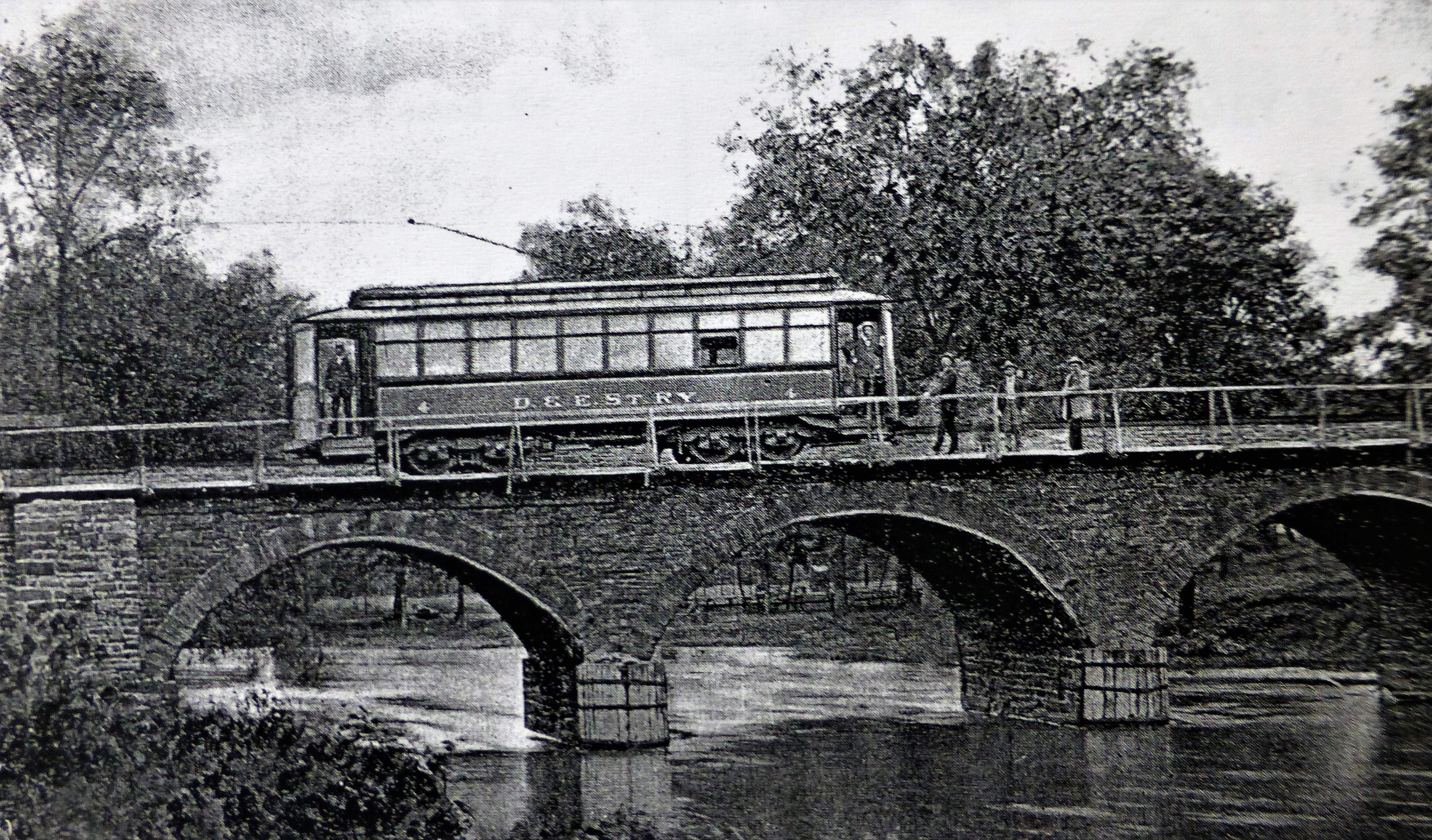For 30 years, you could go anywhere in Bucks by jumping on the local street trolley.
We take so many things for granted, especially when it comes to transportation. Catch a bus, call for an Uber ride, hail a taxi, jump on a commuter train, board a plane, drive your own car, not to mention a motorcycle, bike or scoot around hanging 10 on a skateboard. Channeling a sunny Tuesday afternoon in Doylestown many years ago demonstrates just how far we’ve come.
It was May 24, 1898. Throngs of borough citizens had rallied in the center of town. They had come, as one put it, “to peer into the magic of the 20th century lying just before them.” A burgundy red apparition with gold lettering came into view from the south by “some mysterious force from six miles away.” The clanging of a gong aroused the town. People swarmed to greet the newcomer,” crowed a newspaper reporter. “All grades of humanity from youth to old age suddenly lost their serenity when the car moved smoothly, majestically up Main Street and rounded the sharp curve to the terminal track on State Street. The meaningless poles, wires and track were as if by magic transformed into mystic agencies that finally unfettered the town. Like the electric spark that flashed from the now living overhead wire, the news spread over the town that ‘the trolley’s here.’ ”

Doylestown would be the central link in what would become in just a few years a county-wide network of street railways. It was transformational between towns and villages, moving passengers and freight north to south, east to west in a manner only horses could in previous years. It all began in Langhorne two years earlier.
It was a mid-April afternoon when motorman Marmaduke W. Sexton dressed in resplendent uniform proudly took the controls of the first electric trolley to run in Bucks. The streetcar named Langhorne – known as a “dinkey” for its small size – completed a nearly 2-mile run on tracks laid in the middle of Bellevue Avenue from Winchester Avenue on a downhill slope to the borough railroad station in today’s Penndel. That initial foray would blossom quickly into a 26-mile ribbon of rails and electric wires strung on overhead trolley poles to link Bristol, Hulmeville, Penndel, Langhorne, Newtown, Penns Park, Wycombe, Doylestown, Plumstead, Ottsville, Durham and Easton by 1902. In Doylestown it connected to a line coming out of Philadelphia through Willow Grove.
A separate trolley railway made its way out of Trenton, hugging the Delaware River from Morrisville to New Hope with a spur line from Newtown to Yardley. Power generating stations built in Yardley and another in Brownsville in Upper Makefield (now converted into a home) were essential in keeping the cars rolling. Meanwhile, trolley lines from the Lehigh Valley spread into Quakertown and Upper Bucks, eventually pushing down to Doylestown.

Like the birth of a nation, the fast growth did not come without struggle. First there was the issue of safety. To get a charter for the Langhorne trolley, company officials made assurances at a Newtown hearing that no one had been killed in Philadelphia by overhead street electrical lines – only a few horses. Labor issues and legal tussles over right-of-ways caused minor setbacks. Accidents were rare but shocking. In Doylestown in 1889, kids piled wooden boards on a set of trolley wheels, climbed aboard and headed down a rail incline. At a sharp curve, it tipped over, killing one boy and injuring 20 others. In 1913, a trolley from Newtown to Trenton lost control coming down steep Nickerson’s Hill into Yardley and overturned near Lake Afton, killing one rider and injuring three others.
Rising fares, jolting rides on rough rails due to poor maintenance and too many interruptions in service beset the industry by the 1920s. In 1931, automobiles and buses brought the trolley era to a close. Gone was the grand enthusiasm in Doylestown in 1898 when the town turned out for the arrival of the first trolley.
That afternoon the trolley agent offered free rides “to the Turk and back.”

The Turk was a grist mill settlement a short distance below Doylestown. “Youth and gray hairs, trolley denunciators and trolley enthusiasts, vied with each other to get aboard and take the first trip on the first trolley car that ever left Doylestown,” reported the local newspaper. “Regardless of imminent danger to their limbs, boys clung to any portion of the car where they could get a foothold, and if its crowded condition as it left Doylestown at 2:40 o’clock Tuesday afternoon is a sample of the business the new Company will do, they will always be in clover.”
Sources include “The Trolleys of Bucks County, Pennsylvania” by Harry Foesig, Barker Gummere and Harold E. Cox published by Cox in 1985. My appreciation also to Eric Walerko, archivist at the Margaret R. Grundy Memorial Library in Bristol, and Fletcher Walls of the Doylestown Historical Society.

